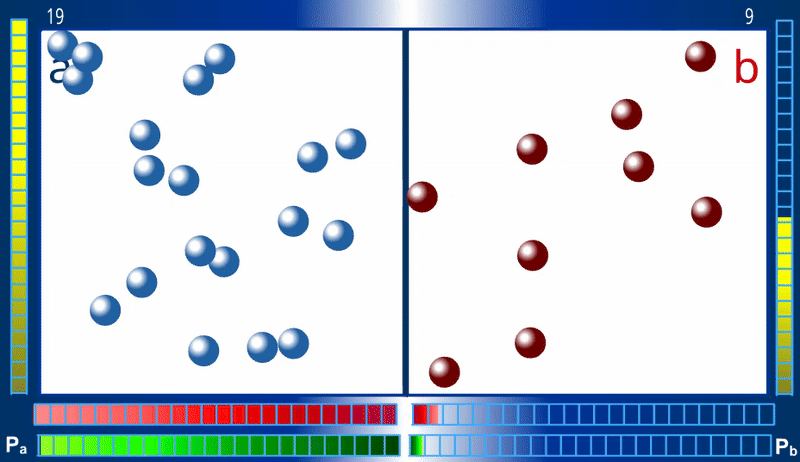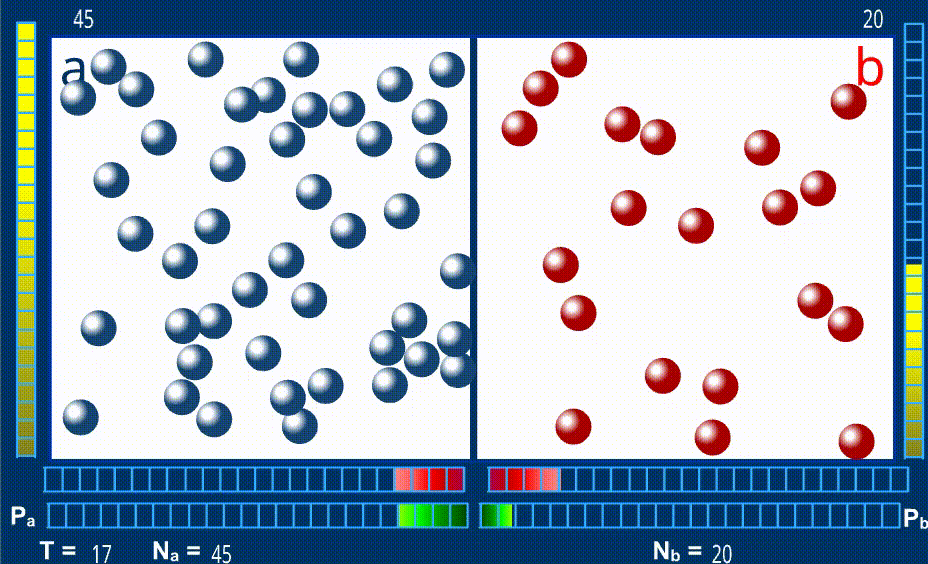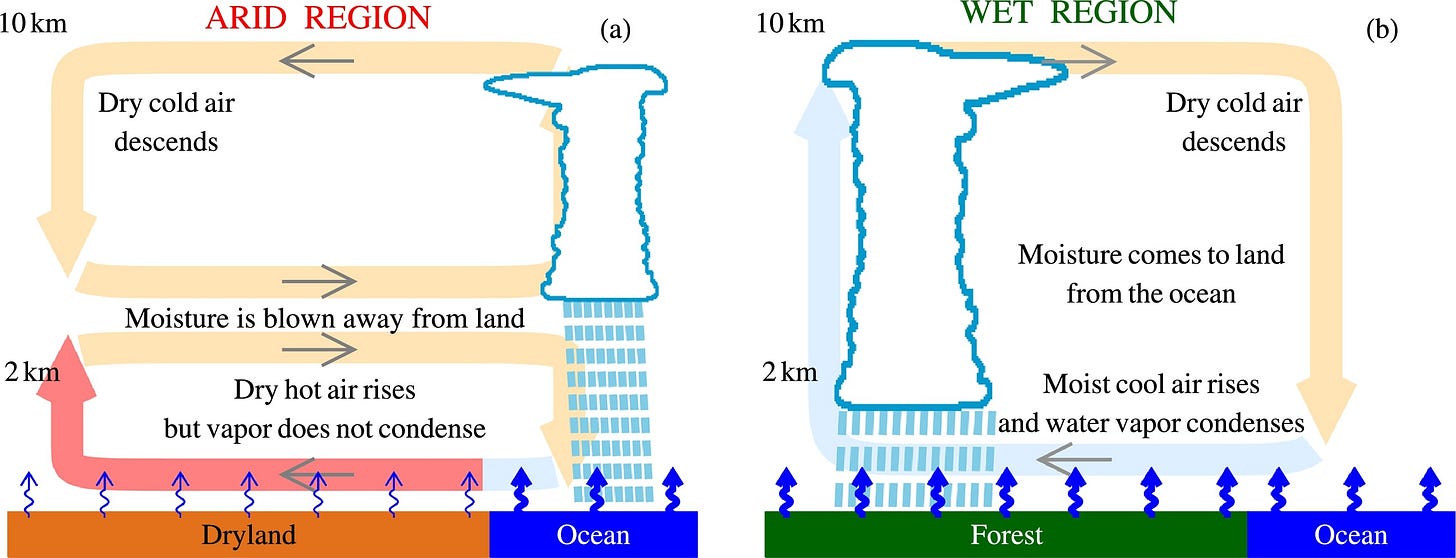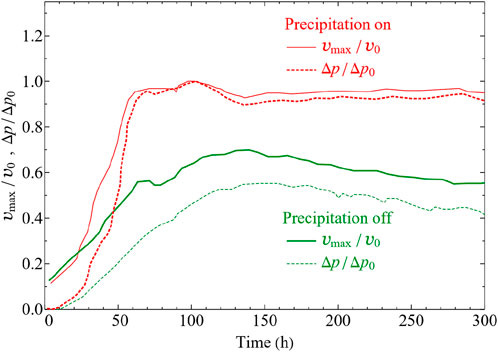Assessing changes in atmospheric circulation due to ecohydrological restoration: How can global climate models help?
First research paper from the newly established Biotic Pump Greening Group Institute
The vegetation-water nexus has been at the core of the human predicament since the distant past. In the Epic of Gilgamesh, perhaps the oldest account of ecohydrological collapse dating to around 2000 BCE, the hero deliberately destroys an ancient Forest of Cedar in Mesopotamia and witnesses a terrible drought and a sharp decline in the level of the Euphrates river as a result of deforestation (Balogh, 2022). Several thousand years later, but still long before the dawn of climate modeling, Friedrich Engels pointed out in 1876 that “the people who, in Mesopotamia, Greece, Asia Minor and elsewhere, destroyed the forests to obtain cultivable land, never dreamed that by removing along with the forests the collecting centres and reservoirs of moisture they were laying the basis for the present forlorn state of those countries” (Engels, 2010). Archaeological research confirms the important role of vegetation disturbances in the extreme climate conditions that led to the collapse of ancient societies (Beresford-Jones et al., 2009; Oglesby et al., 2010). Nowadays, we are witnessing the water levels in the Amazon River basin, which has been subject to massive deforestation in recent decades, at record lows (Maciel et al., 2024; Espinoza et al., 2024).
Reduction in runoff means reductions in the availability of freshwater, hydropower, irrigation, and navigation. When implementing large-scale ecorestoration projects, it is essential to understand potential changes in runoff. If vegetation degradation reduces runoff, then the restoration of functional vegetation should increase it. However, the literature contains considerable controversy, with opposing views on whether adding or removing vegetation increases or decreases runoff (e.g., Ellison et al., 2012; Sheil et al., 2019; Makarieva et al., 2023a; Ma et al., 2024, and references therein).
This is how our article, co-authored by Andrei Nefiodov, Luz Adriana Cuartas, Antonio Donato Nobre, Felipe Pasini, Dayana Andrade and Paulo Nobre, begins. It is a Perspective article published in Frontiers in Environmental Science as part of the Research Topic Rehydrating Planet Earth. You are very welcome to read the full paper free of charge here. In today’s post, I’ll highlight some of its ideas in simple language. On another occasion, I’ll introduce the Biotic Pump Greening Group Institute, a new Brazilian non-profit brought into existence through the herculean efforts of Antonio Donato.
Vegetation and air circulation
The paper presents three main lines of argument. First, we highlight the connection between changes in streamflow and air circulation. When evapotranspiration increases, streamflow will rise only if air circulation intensifies. This intensification means that more water vapor is brought in, less is carried away (due to increased ascent and precipitation), or both. Without an enhancement in circulation, increased evapotranspiration simply returns more rainwater to the atmosphere, leaving less in liquid form to sustain streamflow. We discussed some of these issues during
’s webinar (see “Biotic Pump, Ecorestoration and River Runoff”) and I also touched upon this topic in my recent talk mentioned by Professor Ugo Bardi at his Living Earth.Ignoring changes in air circulation leads to conflicting views on what added vegetation does to runoff
Take-away: whether ecorestoration increases runoff ultimately depends on whether added vegetation can intensify air circulation.
Latent heat and precipitation mass sink
The second line of argument in our paper offers a brief overview of earlier research on how vegetation may influence atmospheric circulation through evapotranspiration, and the physical mechanisms that might underlie this effect. One proposed mechanism suggests that increased evapotranspiration leads to greater latent heat release during condensation in rising air, thereby enhancing low-level air convergence. This contrasts with the biotic pump mechanism, which attributes the main driving force behind low-level convergence to the pressure drop caused by the removal of water vapor from the gas phase, i.e., the apperance of “a kind of free-space”, in the words of Jean-André Deluc.
Let me explain what this discussion is about. Air tends to move from areas of high pressure to areas of low pressure. Air pressure, in turn, depends on two factors: temperature and the number of molecules per unit volume.
Take a look at the animated figure below.
Gas pressure depends on temperature and the number of molecules per unit volume
The left compartment contains more molecules, and they’re moving faster—this corresponds to a higher temperature. As a result, they collide with the dividing wall more frequently and forcefully than the gas molecules in the right compartment, which are fewer and less energetic. Consequently, the gas pressure in the left compartment is higher than in the right.
Therefore, if we remove the wall, the gas will flow from left to right. The green arrow represents the pressure-gradient force acting on the gas. This force is proportional to the difference in the number of molecules between the left and right sides of the vessel. As this difference diminishes, the pressure gradient and the resulting airflow also vanish. Notably, this occurs before the blue and red molecules fully mix, because bulk airflow is much faster than molecular diffusion.
To apply this knowledge to the atmosphere, we need to consider one essential detail: atmospheric air isn’t confined by solid walls, but is held in place by Earth’s gravity. Because of this, surface air pressure equals the weight of the air column above a unit area of the Earth’s surface. So, if the number of molecules in that air column remains constant, then no matter how much we warm the air, the surface pressure will stay the same. The air will expand upward, compensating for the higher temperature with lower density.
Conversely, if we remove gas from the air column, the surface air pressure will decrease regardless of air temperature.
So, when moist air rises and water vapor condenses and precipitates, two things occur. First, the removal of water vapor from the air column can reduce surface pressure, promoting low-level air convergence. Second, the release of latent heat during condensation can warm the air relative to its surroundings, increasing pressure aloft (remember — pressure is proportional to temperature) and driving high-level outflow from the column.
Fig. 1 from Makarieva et al. (2022): In the right panel, the precipitation-induced mass sink reduces surface air pressure, causing low-level air to flow from right to left. Simultaneously, latent heat release increases air pressure in the upper atmosphere, facilitating upper-level air flow from left to right.
Since both upper-level outflow and lower-level inflow are essential for the circulation that transports moisture inland, the mass sink from precipitation and the heat source from latent heat release can act together to sustain this circulation. Readers not inclined to dive into the detailed mechanics may take this as a sufficient qualitative explanation of how the biotic pump works.
Disentangling the dynamics
The third line of argument in our paper addresses how to determine which of the two effects plays the dominant role. This is not a purely theoretical question. If we can identify the processes responsible for generating wind power in Earth’s atmosphere, we can quantify that power—relating it, for example, to the rate of precipitation—and make predictions about what might happen when vegetation cover is altered.
For instance, although condensation and precipitation typically occur together, there are situations where condensation takes place but the resulting droplets do not fall as rain. In such cases, latent heat is still released. But can that heat alone drive large-scale air circulation without precipitation? In heavily polluted air, where droplets remain too small to merge and fall, could latent heat release by itself produce enough circulation to ventilate pollution out from the region?
In a numerical model, we can disable precipitation while keeping all condensate suspended in the form of cloud water. These tiny hydrometeors fall at what is known as their terminal velocity, the speed at which the downward force of gravity is balanced by air resistance. In this state, they exert a downward force on the surrounding air equivalent to the pressure that the water vapor exerted before condensation. Since the total mass of the air column remains unchanged, there is no surface pressure drop due to a mass sink.
In other words, by preventing the condensate from falling out, we retain latent heat release (which occurs during condensation) while minimizing the effect of condensation on surface air pressure (since no mass is actually removed from the air column).
By comparing air circulation in model simulations with and without precipitation, we can assess whether latent heat release alone is sufficient to drive the observed winds. Notably, air motion near the surface is strongly affected by friction, whereas friction in the upper atmosphere is relatively minor. As a result, a stronger pressure difference may be needed at the surface to produce the same horizontal flow as in higher atmospheric layers.
If turning off precipitation leads to no significant change in air circulation, this suggests that latent heat release is the dominant driver. Conversely, if circulation is noticeably weakened or completely suppressed, it would indicate that the precipitation-induced mass sink plays the primary role.
Such experiments, performed using tropical storm models (which typically cover a limited area of a few million square kilometers) hurricanes often fail to develop when precipitation is turned off. When they are forced to develop by changing initial conditions (as in the figure below), they intensify much more slowly and reach significantly lower intensity.
Fig. 2 from our paper. Time evolution of maximum velocity (solid curves) and central pressure deficit (dashed curves) in modeled storms with precipitation on (red) and off (green), using the data of Wang and Lin (2020). (For a related discussion, see “Science Insider #1: The Overlooked Role of Precipitation in Hurricanes”). Note that to initiate a storm in the no-precipitation scenario, a much larger initial air–sea temperature difference was required.
In our paper, we propose performing similar comparisons using Global Climate Models. This approach would help visualize the large-scale influence of pressure gradients linked to the condensation mass sink and their role in driving moisture transport from land to ocean. Such analysis would complement existing observational evidence supporting the major role of the precipitation mass sink in generating wind power.
Outlook
Moreover, it could have important implications for understanding broader climate processes. Our paper concludes as follows.
The causes of this extraordinary warming [in 2023 — AM] remain unclear, but it is likely related to long-distance correlations in atmospheric and oceanic circulation (Schmidt, 2024). While this paper was under review, a new study found that the warming anomaly observed in 2023 can be attributed to an abrupt decrease in planetary albedo due to a reduction in low-level clouds (Goessling et al., 2024), with pronounced cloud reduction hotspots over the Amazon and Congo rainforests (Makarieva et al., 2025). This reduction was accompanied by a significant negative anomaly in annual precipitation over land (Adler and Gu, 2024) (Figure 3).
If the anomalous warming is indeed caused by changes in oceanic and atmospheric circulation, and there is a positive feedback between evapotranspiration and atmospheric moisture convergence, the globally significant ecological dysfunction manifested as the collapse of the biotic carbon sink could contribute to the anomalous warming via its feedbacks on atmospheric circulation. Long-range effects on oceanic circulation from changes in vegetation cover have been previously identified (e.g., Nobre et al., 2009; Bauer et al., 2025).
Expanding on this perspective, a larger proportion of global warming than currently assumed may have been driven by large-scale disruptions in atmospheric circulation linked to the widespread degradation of primary vegetation by human activity during the industrial era. The observed ∼1% relative reduction in the intensity of the global water cycle, compared to model predictions (Figure 3c), may have contributed to significant additional warming (Makarieva et al., 2023b).
There is an urgent need to elucidate the nature of the positive feedback between precipitation and air motion, starting at the conceptual level and subsequently addressing its integration into numerical models. There is growing recognition among climate scientists, particularly those focused on land processes, that theoretical understanding has not kept pace with the advancement of both numerical models and empirical datasets (Byrne et al., 2024). The framework of condensation-induced atmospheric dynamics, with its verifiable analytical formulations, represents a promising direction for advancing this topic.
Climate change mitigation and hydrological restoration are inherently multidisciplinary challenges. As a team composed of theoreticians, modelers, and ecorestorationists working on the ground, we present these proposed analyses to the broader scientific community for discussion and possible cooperation. We believe that such investigations could ultimately contribute to the development of effective strategies for re-stabilizing the terrestrial biosphere and its water cycle.







A reader asked two questions, which I respond to here.
1. How do you recommend I best engage with, learn and absorb the main summary points of your work on biotic regulation? Do you maintain a current summary document?
2. Are you familiar with the syntropic agricultural framework developed by Ernst Gotsch in Brazil? And would you say that his observations of landscape rehydration using succession management of plant guilds affirms your research?
1. You can read about biotic regulation more fully at https://bioticregulation.ru , see especially the books section https://bioticregulation.ru/pubs/pubs5.php
For a more recent overview, see Makarieva A.M. (2022) Natural Ecosystems and Earth’s Habitability: Attempting a Cross-Disciplinary Synthesis. https://bioticregulation.ru/ab.php?id=wild
2. Two of our team members, Dayana Andrade and Felipe Pasini, used to work with Ernest Gotsch and did a lot to disseminate knowledge about his important work (as "Agenda Gotsch"), see, e.g., Dayana's profile on linktr.ee https://linktr.ee/dayana.andrade
Unfortunately besides anecdotal evidence that the water cycle has greatly improved upon forest recovery (as it should be in that region), there have been no measurements to record (and publish) that fact. Unfortunately the situation is similar with many other projects, where no attention is paid to properly monitor quantitative changes in the water cycle. This is understandable because people are having a hard time reviving the ecosystem and may not have resources to spare. But ultimately we don't have this information, which is a great pity.
Are we ready to discuss geo-engineering to preserve those forests? David Spratt of Australia thinks it is time to discuss and experiment with it because our predicament is more dire than most people realize: https://www.breakthroughonline.org.au/_files/ugd/148cb0_fb8d67e54f914f429dc989ac968327b9.pdf